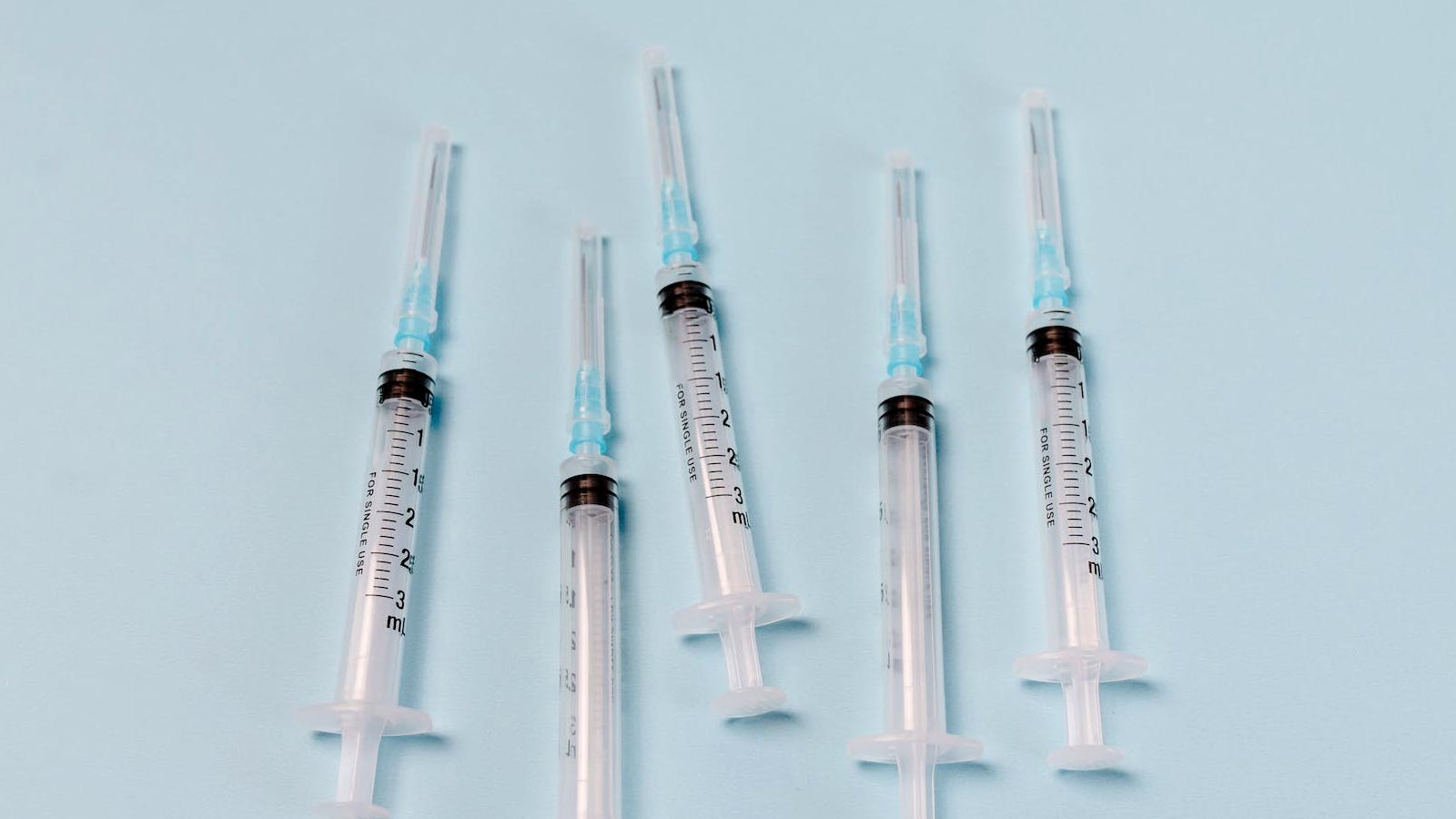How to Properly Store & Dispose of HRT Needles and Syringes

Needles and syringes are medical devices that are used to inject medication into the body, or withdraw fluids from the body. They are commonly used by trans and non-binary people who are taking injectable forms of gender-affirming hormone therapy (GAHT, also referred to as HRT) medications, such as testosterone and estrogen.
Improper storage and disposal of these devices can lead to injuries, including needle-stick injuries, as well as spread infections.
Storage
Keep your supplies organized to make shot time smoother. You can purchase a dopp kit or use any storage box or bag you'd like. Inside it, you can store everything you'll need for injection time, which may include:
- your medication
- needles (both for drawing up your medication, and for injecting it)
- syringes
- alcohol prep pads
- band-aids
- written instructions or reminders from your healthcare provider detailing how to perform a self-injection
Typically, you'll keep your supplies stored at room temperature at 60-80º F. Keep your supplies away from heat, sunlight, and moisture, and out of the reach of children and pets. Be sure to check your medication's storage instructions and/or speak with your healthcare provider if you have any questions.
Disposal
Never throw your used needles into the trash or toilet. To properly dispose of your needles, put your needle and syringe in a medical sharps container immediately after use.
- A sharps container is a hard plastic or metal container with a tight-fitting lid that is used to dispose of sharp medical devices.
- Sharps containers should be kept out of reach of children and pets.
- Sharps containers come in different shapes and sizes and can be purchased at medical facility. There are also smaller, portable versions available for when you're traveling.
- For a low-cost alternative version, you can also use any sturdy plastic or metal container, such as a laundry detergent container. Needles and syringes should always be disposed of in a puncture-resistant, leak-resistant container. Do not use glass (which can shatter if dropped) or flimsy plastic containers like two-liter bottles, milk containers, or soda bottles. If you do use a sturdy homemade container, be sure to label it "SHARPS" clearly on all sides.
After your injection, dispose of the entire needle and syringe into your sharps container. Do not take the needle off of your syringe, recap the needle, or touch/bend the needle. Never reuse supplies, and never put your hand inside your sharps container.
Do not overfill your sharps container. Overfilling a sharps container increases the risk of an accidental needle-stick injury. When you've filled your container up to the marked indicator line, or when it's about three-quarters full, it’s time to dispose of it.
- Seal the container with the lid and dispose of it according to your local regulations. Some areas allow you to throw it away in the trash with special markings, while others require you to take it to a special facility. Check with your local trash removal services or health department for information on how to properly dispose. SafeNeedleDisposal.org is a great resource to check your local regulations.
- Never place your sharps container in the recycling.
- Do not reuse sharps containers.
The information on this page is for general education only. It is not medical advice, legal advice, or professional advice. For questions or help with your specific situation, please talk to a licensed doctor, lawyer, or another qualified expert.

Written by Point of Pride
Point of Pride provides financial aid and direct support to trans folks in need of health and wellness care.


